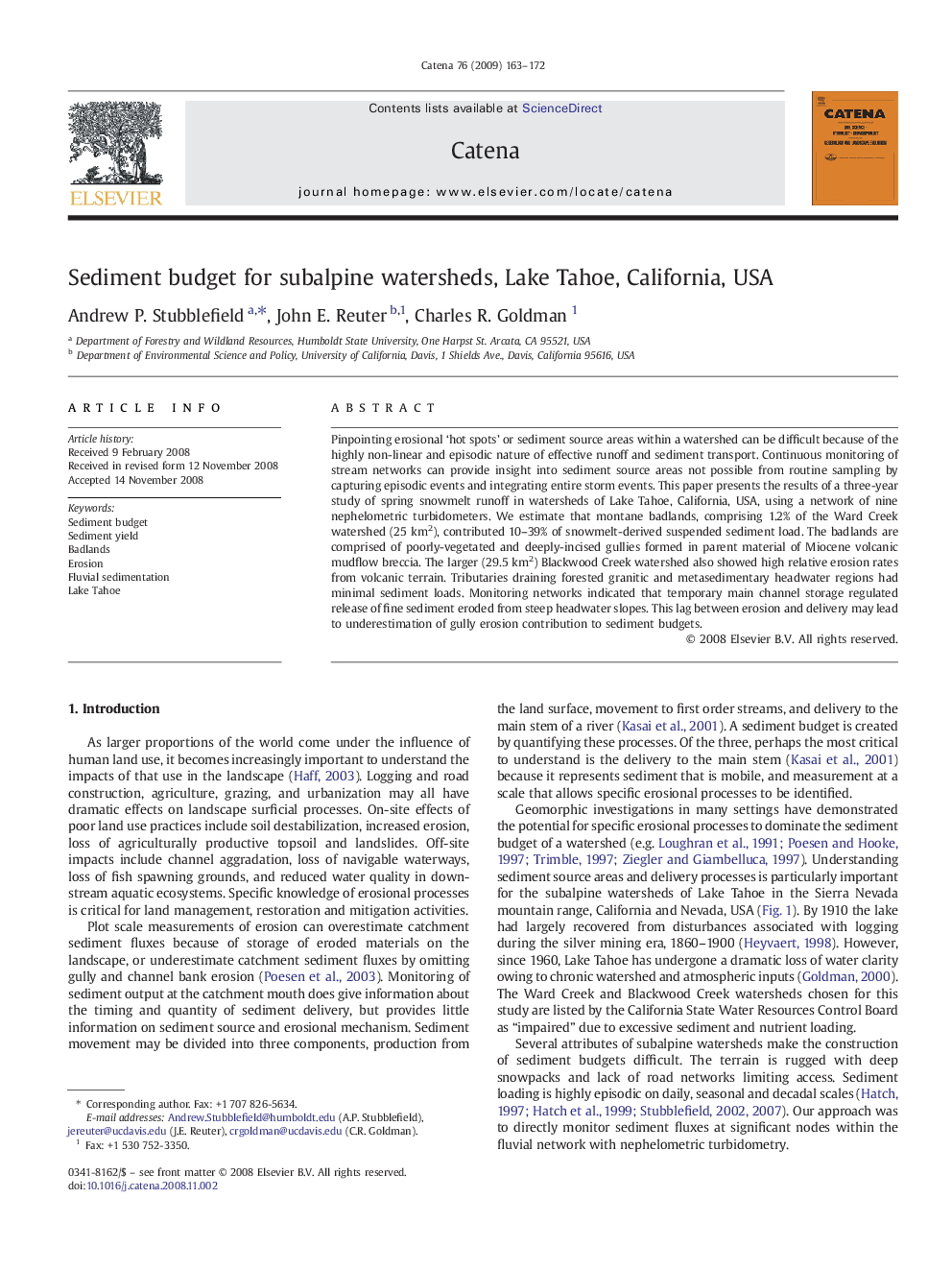| Article ID | Journal | Published Year | Pages | File Type |
|---|---|---|---|---|
| 4572315 | CATENA | 2009 | 10 Pages |
Pinpointing erosional ‘hot spots’ or sediment source areas within a watershed can be difficult because of the highly non-linear and episodic nature of effective runoff and sediment transport. Continuous monitoring of stream networks can provide insight into sediment source areas not possible from routine sampling by capturing episodic events and integrating entire storm events. This paper presents the results of a three-year study of spring snowmelt runoff in watersheds of Lake Tahoe, California, USA, using a network of nine nephelometric turbidometers. We estimate that montane badlands, comprising 1.2% of the Ward Creek watershed (25 km2), contributed 10–39% of snowmelt-derived suspended sediment load. The badlands are comprised of poorly-vegetated and deeply-incised gullies formed in parent material of Miocene volcanic mudflow breccia. The larger (29.5 km2) Blackwood Creek watershed also showed high relative erosion rates from volcanic terrain. Tributaries draining forested granitic and metasedimentary headwater regions had minimal sediment loads. Monitoring networks indicated that temporary main channel storage regulated release of fine sediment eroded from steep headwater slopes. This lag between erosion and delivery may lead to underestimation of gully erosion contribution to sediment budgets.
